Despite Ding’s advantage of playing with the white pieces, he was unable to secure a win, getting only a slightly better position. With just four more games scheduled to take place, Nepomniachtchi maintains the lead with 5,5:4,5
In a tense match where every move counts, with the advantage of leading the white pieces and trailing Ian Nepomniachtchi, Ding Liren was under more pressure to play for a win in game ten. Despite White managing to create some initiative, Black was just in time to defend everything and held his ground in the endgame.
In the Four knights variation of the English opening, Ian Nepomniachtchi opted for a sharper but solid line where Black leaves his king uncastled and pushes on the kingside. The two entered a position which Nepomniachtchi tested as White in 2020, meaning he was familiar with the line.
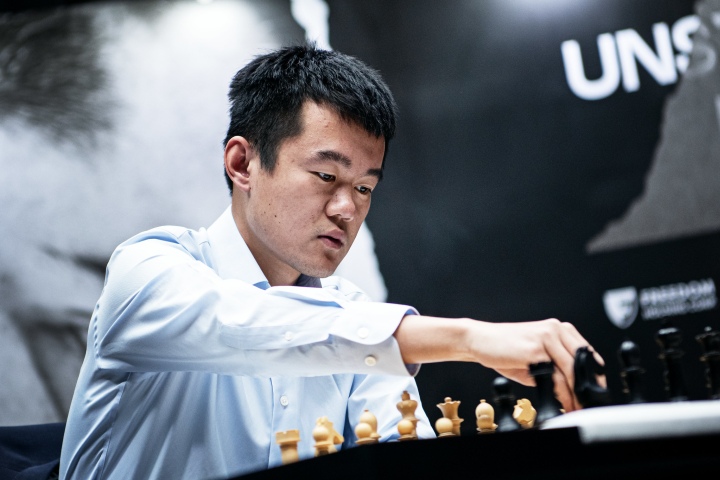
Ding Liren played the optimal moves, got some initiative and even won a pawn but it seemed that Ian was in his preparation as he went for a slightly inferior but defendable ending.
The endgame resembled the situation from game nine. In that game, White (Nepomniachtchi) had a pawn advantage in a dead-even draw but opted to press his opponent for another 30 moves. Now, it was Ding’s turn to return the favour as he pushed in an even position with a pawn up.
Black managed to activate his rook on the queenside just in time to stop White from seizing more initiative. Ding played on, trying to edge a victory, but Nepomniachtchi defended well and was better on time. Gradually, all the pieces came off the board and, after three hours of play and with just the two kings left on the board, the game ended in a draw on move 45.
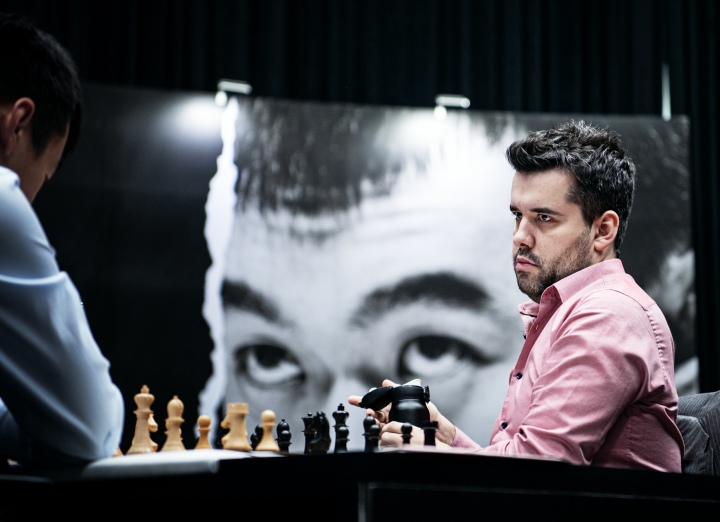
A solid outcome for Nepomniachtchi. With just four more games left in the match, Nepomniachtchi is leading with a score of 5.5 to 4.5, giving him an advantage in the upcoming eleventh game where he will play with the white pieces. Ding, on the other hand, must win two games and not lose the other two if he wants to take the crown to China. In the eleventh game, he will be leading black pieces which makes it riskier to play for a win.
Game eleven takes place on Monday, 24th April at 3 PM Astana time.
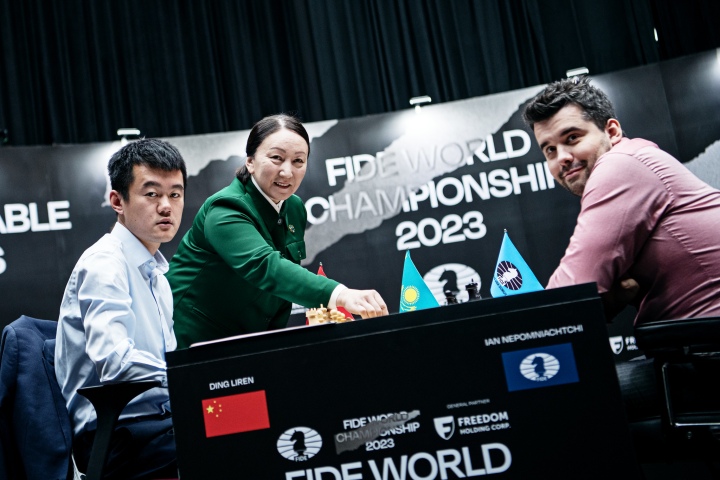
The honour of making the first ceremonial move was given to Kunsulu Zakarya, a prominent Kazakh scientist in the field of biological safety and the head of the Kazakhstan Academy of Sciences.
In the Four Knights variation of the English opening, the opponents followed the game Nepomniachtchi – Cardoso (2020) up to move 14 (which Ian won but had a very bad position at some point), where Ding deviated with a logical decision to castle.
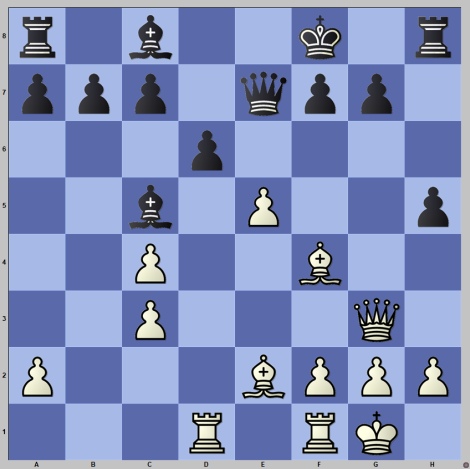
Nepo responded with 14…h4. The position is even, although the white king is more secure and as long as the queens are on the board, Black has to be more careful.
After a logical sequence 15.Qd3 g5 16.exd6 cxd6 17.Bd6 Qxd6 18.Qxd6 Bxd6 19.Rxd6 Ding headed for an endgame where Whtie has an extra pawn but has a bad pawn structure.

Commenting on White’s choice to go for the endgame, Grandmaster Daniil Dubov noted: “Ding could be a little bit annoyed with the previous game where he was tortured in an even endgame… So he is probably saying: you know what, now it’s my turn and I will play this dry position.”
After 19…Be6 20.f4 White opened the f-file for the rook but Black has enough defensive resources.
Ian’s only problem was his advanced and vulnerable h3-pawn. With this in mind, he timely brought his rook to the queenside and created a sufficient counterplay against White’s weaknesses. In subsequent play, Nepo confidently held his ground and forced the exchange of a pair of rooks closer to the time control.

34…Bb3! And now, it was time for the bishops to go off the board. After forced 35.Bxb3 35…Rxc3+ 36.Kh4 Rxb3 37.Rb5 Ra3 38.Rxb6 Rxa4 39.Kxh3 White preserved his extra pawn but the rook endgame that emerged is dead drawn. Just a few moves down the road the opponents shook hands.
After the game Ding noted that he did achieve some initiative, but nothing substantial. “At one point I am wondering if I could retreat the bishop instead of taking on d6 so I played the more natural move. Ian defended quite well so I didn’t have many chances in the game”.
Asked about his confidence level about winning the match, Ding said: “We still have more games left. I wouldn’t say how much confidence I have”.

Nepomnianichtchi said that the whole line played in the game “is interesting”. He recalled the game from 2020 when he got into the same position as White against Carlos Jose Gabriel “and I got lost with White within a few moves”.
“I thought it was quite a nice line. The move of the bishop to c5 looks a little bit scary, but if you go for some forcing lines then you take extra risk. As far as I know, there’s not much White can do here”, said Nepomniachtchi.
One of the questions in the press conference referred to the report about Ding Liren’s preparation being leaked online. While Ding and his team refused to comment on this, Ian Nepomniachtchi was asked for his thoughts.
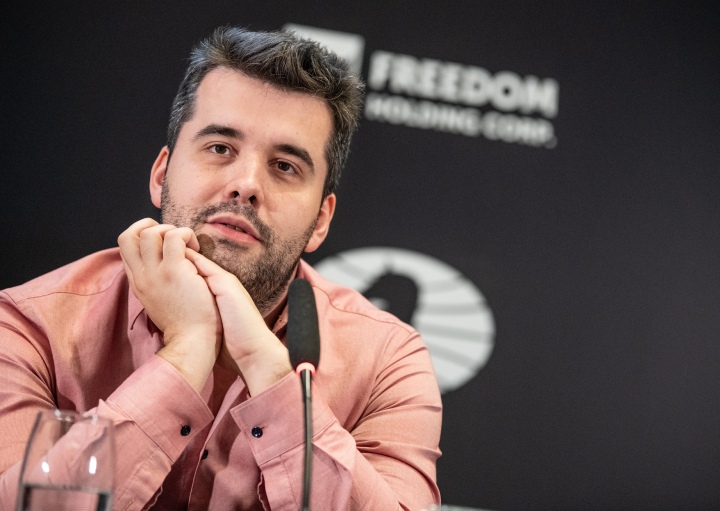
“My team took a look. I wouldn’t say it should be as hyped as it actually is. I am still more or less doing what I was going to do. We didn’t change it too much I think”, said Nepomniachtchi.
When asked about what fascinated him in chess when he was young, Nepo noted that he learnt chess as he learnt to read adding that he was “seeking for harmony between the pieces”.
Text: Milan Dinic
Photo: Stev Bonhage and David Llada
Official website: worldchampionship.fide.com/
About the match
The 2023 FIDE World Chess Championship match between Grandmasters Ding Liren and Ian Nepomniachtchi takes place from 7th April to 1st May 2023 in Astana, Kazakhstan.
The match consists of 14 games, followed by a rapid/blitz tiebreak in case of a tie.
The time control for the standard games is 120 minutes for the first 40 moves, followed by 60 minutes for the next 20 moves, and then 15 minutes for the rest of the game, with an increment of 30 seconds per move starting from move 61.
The first player to reach 7,5 points in the 14 games will win the match. If it’s a tie, the two go to tiebreaks.
The prize fund for the match is two million euros, with the reward being split 60:40 between the winner and the runner-up.


